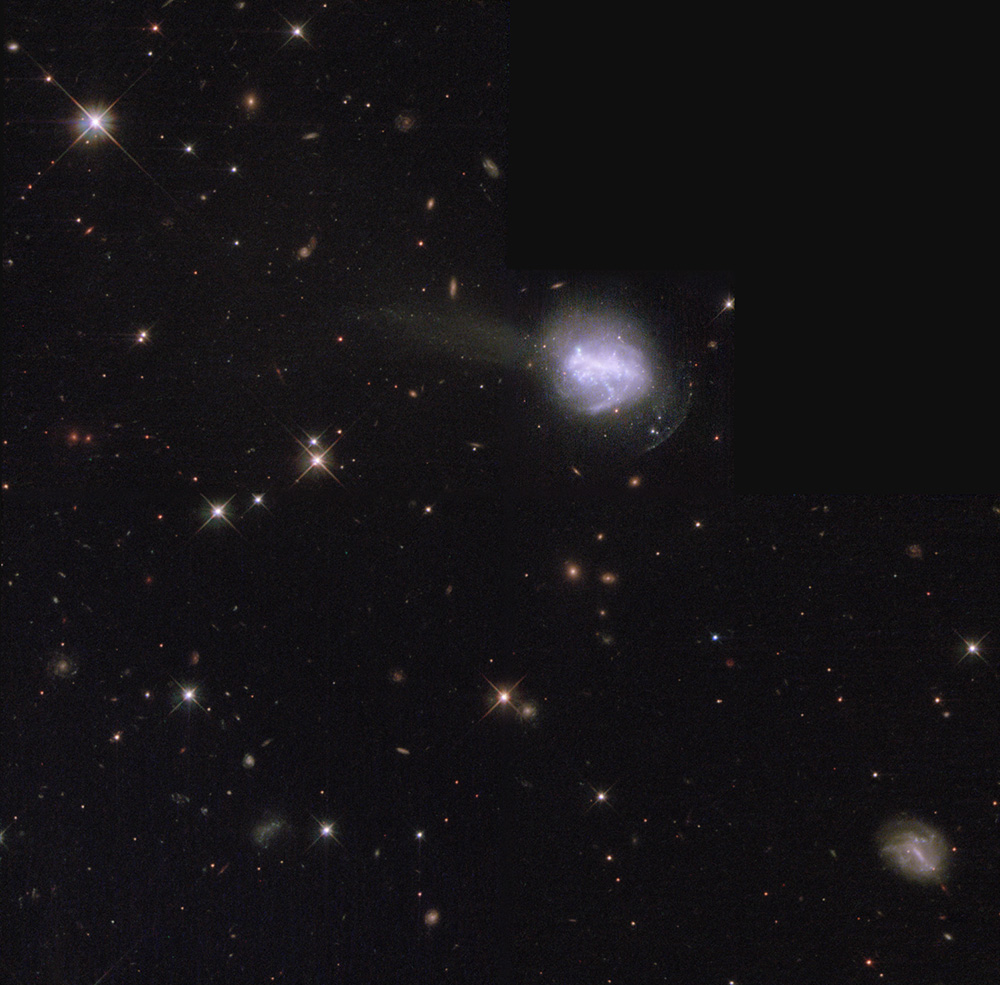
ESO 185-13 (2015)
WFPC2 image from 2007 of a galaxy which recently underwent a collision. Simulations have shown that this particular pattern which tends to form arced shells of stars around the galaxy can be attributed to a smaller mass plunging into the larger one and oscillating back and forth a bit before being incorporated. Called a luminous blue compact galaxy, a burst of star formation has also taken place within it, possibly due to the merging.
If you look very closely at the faint stream to the left of the galaxy, you can see the globular clusters flung far from their parent. They look like resolved individual stars but they are really clusters of many thousands. One wonders if they will make it back or be left behind.
Numerous background galaxies are also visible. The spiky stars are Milky Way foreground stars.
During this time period (2007), Hubble’s ACS (Advanced Camera for Surveys) had a problem which kept it from fully functioning, but the old WFPC2 (Wide Field Planetary Camera 2) was still going. It wasn’t until 2009 (STS-125) that ACS was repaired, WFPC2 was removed, and WFC3 (Wide Field Camera 3) was installed through no small feat of orbital surgery.
This image is possible thanks to the following proposal:
The Nearest Luminous Blue Compact Galaxies: A Window on Galaxy Formation
Red: hst_10902_05_wfpc2_f814w_wf_sci
Green: hst_10902_05_wfpc2_f606w_wf_sci
Blue: hst_10902_05_wfpc2_f450w_wf_sci + hst_10902_b2_wfpc2_f439w_wf_drz + hst_10902_b2_wfpc2_f336w_wf_sci + (faintly) hst_10902_05_wfpc2_f606w_wf_sci
North is NOT up. It is 20° counter-clockwise from up.
Copyright information:
Hubble data is public domain, but I put a lot of work into combining it into beautiful color images. The minimal credit line should read: NASA / ESA / J. Schmidt

This work is licensed under a Creative Commons Attribution 3.0 Unported License.


